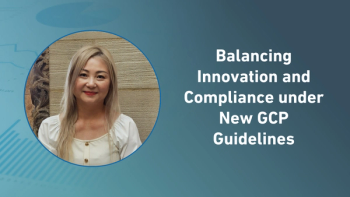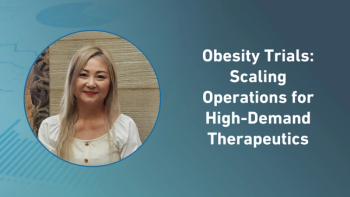
Rate of Patient Recruitment to International Multicenter Clinical Studies in Eastern Europe Countries
The success of a clinical study depends on the possibilities to involve the patient in the study.
Clinical research as a multi-stage multitasking complex of necessary targeted actions basically requires the involvement of patients or volunteers. (ICF GCP E6(R1) Step 4 version dated November 9, 2016). An important component of conducting a clinical trial is the time spent on the research. Increasing the duration of the study increases the financial cost of the study sponsor DiMasi (2016) and each additional day of research cost the sponsoring companies 37 thousand US dollars and, at the same time, losses from an unsold product were two or three orders of magnitude higher—from 0.6-8.0 million US dollars to USD 23 million.3,16 The total duration of the study is constantly increasing, in particular due to the complexity of the protocols and, as a consequence, the amount of information required from the site. In particular, PhRMA in 2015 provides data on the number of pages of registration cards and criteria for inclusion of patients in protocols from 2000 (55 and 31, respectively) and from 2011 (171 and 46), which corresponds to an increase of 227% and 58%, respectively.
The recruitment of patients occurs at the very beginning of the study of any phase - during the recruiting period. The activity of research sites during this period affects the duration of this period, and ultimately the cost of research and the duration of the entire research. IGEA Pharmaceutical club (2018) regards the recruiting period as one of the barriers to clinical trials.7
The purpose of this analysis was to retrospectively review the enrollment of patients at various sites participating in international multicenter clinical trials, taking into account various factors.
Analyzed 69 sites in Russia, Ukraine and Belarus for the period 2008 to 2017.1,4, 12, 13 The data are presented in Figure 1.
We took the methodology for determining the rate of gain by Eric B. Lynam and co. (2012) and modified it by dividing the number of patients included in the study and the number of actual months spent by the site on involving the patient in the study.5 The sites were divided into four categories depending on the rate of recruitment of patients per month (30 days):
- Silence sites—rate of recruitment—0 patients per month;
- Low recruiting—rate of recruitment by 0,01 to 0,19 patients per months;
- Middle recruiting—by 0,20 to 0,89 per months;
- High recruiting—by 0,90 to 3 patients per months.
Figure 2 shows that the number of centers in which there were no patients throughout the study was 37%. Our data is comparable to the NCBI data for 2010, where the percentage of sites who did not recruit patients reached 50%.15 This high percentage affects the duration of the study.
The distribution of ranked centers by recruitment rate in different countries is shown in Figure 3.
The data in Figure 3 show the absence of silent sites in some countries, which, in our opinion, is associated with the total number of international multicenter studies. According to clinicaltrial.gov, 2,744 studies were conducted in Russia from 2008 to 2017, in Ukraine—1143 and in Belarus—135 studies.
The distribution of studies in centers by nosological units is shown in Figure 4
The data in Figure 4 show that oncology prevailed in research during this period, which is comparable to the general growth trend in research in the field of oncology.
Figure 5 shows that researchers are faced with the absence of patients for research in all pathologies and the percentage of such centers ranges from 15 to 40%. Obviously, this percentage of silent sites directly affects the recruitment duration. It can also be seen that in the case of rectal cancer, a high percentage of silent sites (33%) is compensated by a higher percentage of highly recruited sites (44%), however this is an exception and the general trend is a large percentage of silent sites and a small percentage of highly recruited sites.
We further analyzed:
- Experience of the researcher;
- Potentially stated patient enrollment plan at the beginning of the study.
According to the researcher's experience, the site was divided into three categories
- with work experience up to 4 years—beginners
- with work experience from 4.1 to 6.9 years—experienced
- with more than 7 years of work experience—with extensive work experience
The analysis reveals a picture of double the percentage of silent sites (43%) in centers with more than seven years of Principal Investigator experience. This fact can be interpreted as a great activity in the search for patients of young researchers earning a reputation for themselves, but this percentage of activity goes into low recruiting. The number of highly recruited sites is approximately the same in all groups.
Sites that potentially had patients and were planning to recruit a certain number of patients are divided into four groups:
- up to 1 patient—low patient recruitment potential;
- 1 patient to 10—moderate patient recruitment potential;
- from 11 patients to 23—average patient recruitment potential;
- more than 23 patients—high potential for patient recruitment.
An analysis of the data in Figure 7 shows that centers that planned average patient enrollments generally met their plans. Centers that initially underestimated recruitment plans did not strive to fulfill them and, as a consequence, had a high percentage of complete absence of recruitment and lack of high recruitment. Centers that initially overestimated their recruitment plans had the highest percentage of complete absenteeism, but this percentage was partially offset by the presence of high recruiting (8%).
Experiences of Principal Investigators in relation to recruitment plans are presented in Table 1.
Analysis of the data in Table 1 is primarily necessary for silent sites that have not recruited a single patient. Among the silent sites that initially assess their potential for recruiting patients as high, there are no researchers with up to four years of experience.
Among the silent sites, all groups of researchers who rated the potential as low participated in the study on thrombocytopenic purpura, a rare disease.
Silent sites with seasoned lead investigators and extensive experience overestimated potential patient recruitment, requiring further analysis.
Among the highly recruited sites, researchers with different experience of participation in research do not have sites that initially assess the potential for recruiting patients as low.
Thus, the analysis of the rate of recruitment of patients to international multicenter clinical trials revealed some possibilities of the site for conducting a given study, taking into account the initial data of the researcher's experience and the planned recruitment of patients, which will allow in the future to predict the duration of the recruitment of patients.
Svyatoslav Sergeevich Milovanov is a Study Physician in Moscow, Russia.
References
- A Randomized, Multi-center, Double-Blind, Placebo-Controlled, Single/Multiple Dose Escalation Phase Ib/IIa Clinical Trial to Investigate the Safety and Efficacy of Recombinant Human Soluble Fc-gamma Receptor IIb (SM101) for Intravenous Application in the Treatment of Patients with Chronic Adult Primary Immune Thrombocytopenia (ITP). EudraCT Number: 2009-014842-28. https://www.clinicaltrialsregister.eu/ctr-search/trial/2009-014842-28/DE
- Biopharmaceutical Industry-Sponsored Clinical Trials: Impact on State Economies // Prepared for Pharmaceutical Research and Manufacturers of America (PhRMA).- March 2015.
- DiMasi, J. A., Grabowski, H. G., & Hansen, R. W. (2016). Innovation in the pharmaceutical industry: New estimates of R&D costs. Journal of Health Economics, 47, 20–33.
- Efficacy and Safety Study of Leukocyte Interleukin,Injection (LI) to Treat Cancer of the Oral Cavity (IT-MATTERS). ClinicalTrials.gov Identifier: NCT01265849.
Eric B. Lynam , M.Sc.,Jiin Leaw , M.D., andMatthew B. Wiener , Pharm.D. A Patient Focused Solution for Enrolling Clinical Trials in Rare and Selective Cancer Indications: A Landscape of Haystacks and Needles //Drug Inf J. 2012 Jul; - 46(4):- P.472–478. - Evaluation of Clinical Trial Costs and Barriers to Drug Development. 28AUG2018 //
https://www.igeahub.com/2018/08/28/evaluation-of-clinical-trial-costs-and-barriers-to-drug-development/ . - IGEA Pharma N.V. Annual report 2018. https://www.igeapharma.nl/wp-content/uploads/2019/04/igea-nv_annual-report-2018.pdf
- Integrated addendum to ich e6(r1): guideline for good clinical practice e6(r2) // current step 4 version dated 9 November 2016.
- KA Getz, RA Campo, and KI Kaitin. “Variability in Protocol Design Complexity by Phase and Therapeutic Area.” Drug Information Journal 2011; 45(4):413-420; Updated data provided through PhRMA correspondence with Tufts Center for the Study of Drug Development.
- Kalinovskaya Elena. In Russia, the number of approvals for clinical trials has decreased by more than 20%. Pharmaceutical BulletinВ России более чем на 20% снизилось количество разрешений на клинические исследования. Фармацевтический вестник. 6 Octоктября 2017 //
https://pharmvestnik.ru/content/news/v-rossii-bolee-chem-na-20-snizilosj-6-10-17.html . - List of life-threatening and chronic progressive rare (orphan) diseases leading to a reduction in the life expectancy of citizens or their disability Перечень жизнеугрожающих и хронических прогрессирующих редких (орфанных) заболеваний, приводящих к сокращению продолжительности жизни граждан или их инвалидности . //report of Russian MoH. https://www.mzsocial-rk.ru/dejatel-nost/organizacija-lekarstvennogo-obespechenija/orfannye-zabolevanija/.
- Phase 3 Trial of Litx™ Plus Chemotherapy vs. Chemotherapy Only Treating Colorectal Cancer Patients With Recurrent Liver Metastases. ClinicalTrials.gov Identifier: NCT00440310
- Study of Ganetespib (STA-9090) + Docetaxel in Advanced Non Small Cell Lung Cancer (GALAXY). ClinicalTrials.gov Identifier: NCT01348126
- The complete analysis of the costs and barriers to drug development in 2018. All the expenses to conduct clinical trials and the split by disease areas // https://www.igeahub.com/2018/08/28/evaluation-of-clinical-trial-costs-and-barriers-to-drug-development/.
- Transforming Clinical Research in the United States: Challenges and Opportunities: Workshop Summary. //
https: //www.ncbi.nlm.nih.gov/books/NBK50888/ . - Zavidova Svetlana. Medical bulletin. Завидова Светлана. Медицинский вестник // №8 (549). - 18 Marchмарта 2011 г. - PС.17.
Newsletter
Stay current in clinical research with Applied Clinical Trials, providing expert insights, regulatory updates, and practical strategies for successful clinical trial design and execution.






.png)



.png)



.png)
.png)
